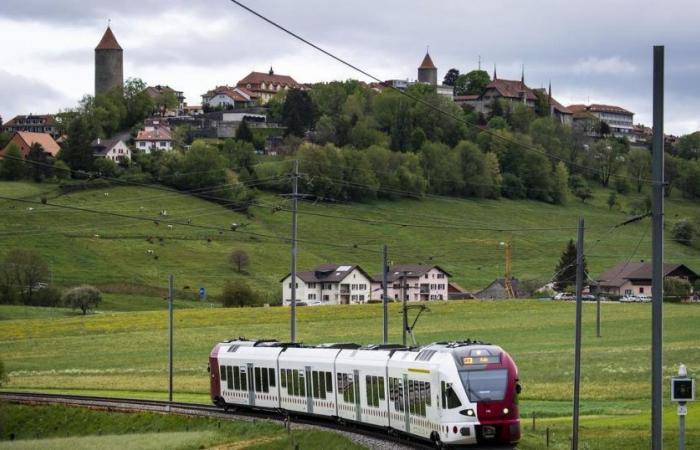Friborg is outlining its rail offer for 2050 and beyond. This includes a better connection to the national network, reinforced frequencies as well as optimized connections aimed at making the offer more attractive for commuters and leisure traffic.
The “Rail Vision 2050+” was presented on Tuesday by State Councilor Jean-François Steiert. It is based on the climate policy objectives of the Confederation and the canton, counting on a strengthening of the offer, in particular for regions with high development and a low share of sustainable mobility.
The train has been described by the Minister for Mobility as the backbone of public transport. The report outlines improvements in three areas: national integration of the canton into the mainline traffic network, extension of the Friborg RER and development of regional rail lines.
400,000 inhabitants expected
Key objectives include an increase in frequency, a reduction in travel times and a better connection with economic centers such as Bern and the Lake Geneva region. The report further highlights the “dynamic” socio-economic developments that play a central role in rail planning.
For years, the canton of Friborg has recorded one of the most rapid demographic developments in Switzerland. With 341,490 inhabitants at the end of 2023 and an expected population of around 400,000 inhabitants in 2050, the share of elderly people will increase in particular, which requires an adaptation of mobility offers.
Furthermore, regional centers like Bulle, the south of the canton and the Broye region contribute decisively to economic development. An observation which reinforces the need for better transport links. Beyond that, the labor market also has a great influence on mobility planning.
Commuting traffic
More than a quarter of working people actually commute to other cantons. At the same time, commuter traffic to the canton of Friborg is expected to increase “significantly”, which accentuates the need for more efficient public transport, said the Mobility Directorate (DIME) in its presentation.
The strengthening of the rail offer should make it possible to significantly reduce motorization in the canton which is currently “significantly” above the Swiss average, with 596 cars per 1000 inhabitants. To meet climate requirements, the extension of the rail network must therefore also contribute to modal shift.
The implementation decision rests with the Confederation and its Parliament, in close collaboration with neighboring cantons and transport companies. It will take place in several phases, with the first infrastructure measures to be integrated into national infrastructure development plans from 2026.
ats/juma
#Swiss






